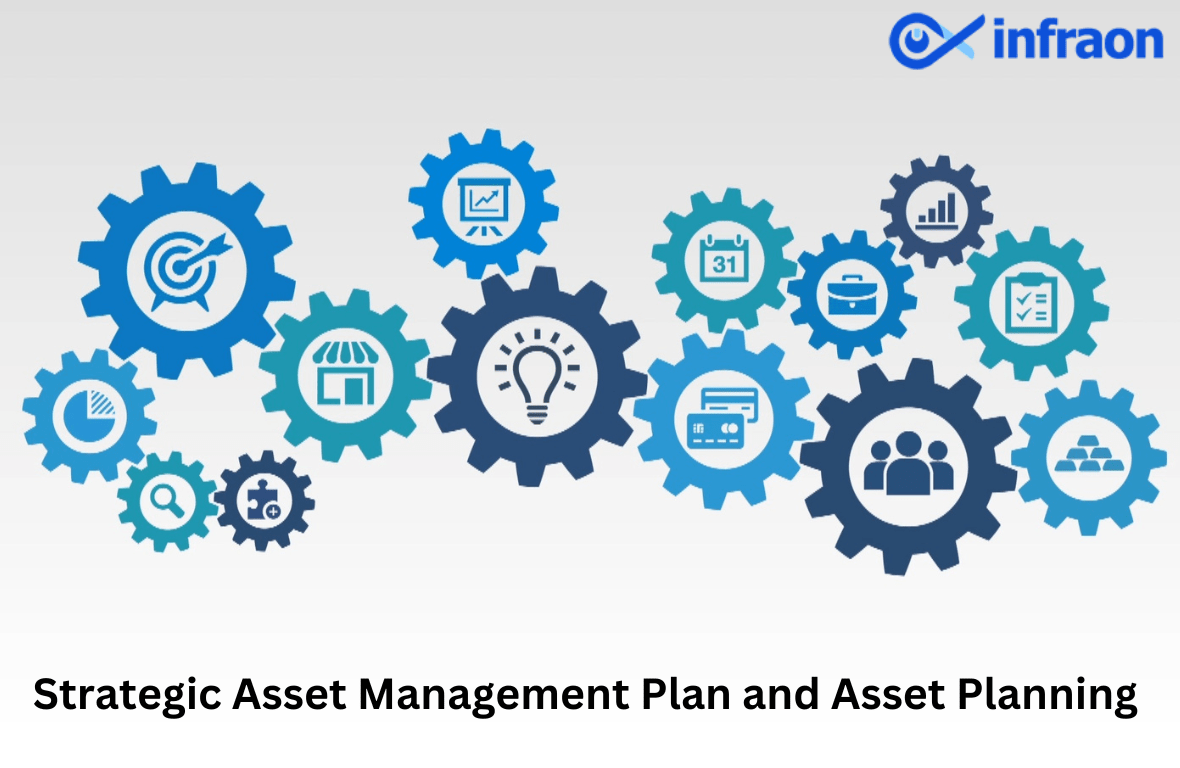The rapid growth and adoption of technology have transformed the way businesses operate. As businesses continue to evolve, so do the IT assets they use. Companies need to manage their IT assets and plan for the future to remain competitive. This article will discuss the importance of strategic IT asset management planning, its benefits, and provide tips on how to create a successful plan for the year 2023. By understanding the current trends in IT asset management and leveraging the latest technology, companies can develop a strategy that will help them stay competitive and thrive in the future.
Related Blog: The Top 10 Essential Asset Management System Requirements in 2023
Importance of IT Asset Management Plan
Information technology (IT) asset management is vital to ensuring that a business runs smoothly and efficiently. IT assets are essential to the operation of any business, and managing them correctly can help reduce costs, improve security, and increase productivity.
An IT asset management plan is a strategic document that outlines the objectives, processes, and procedures for managing a company’s IT assets. It is designed to ensure that IT assets are used efficiently and securely and that their value is maximized. The plan should include
- A description of the IT assets to be managed.
- The roles and responsibilities of personnel involved.
- The procedures for tracking and managing those assets.
The importance of IT asset management cannot be overstated. By having a plan, businesses can ensure that their IT assets are used optimally. It can help them identify potential risks and take steps to mitigate them, as well as prevent unnecessary spending and inefficiencies.
An IT asset management plan can help businesses reduce costs by ensuring that they purchase only the assets they need and that they are correctly maintained and replaced when necessary. It can also help them identify and address any security vulnerabilities in their systems and prevent unauthorized access to sensitive data.
Finally, an IT asset management plan can help businesses increase productivity. By managing their IT assets, companies can ensure that their systems are up-to-date and running optimally. It can maximize its ROI and ensure its employees have the resources they need to succeed. In short, an IT asset management plan is essential for any business that relies on IT assets. It can help them reduce costs, increase security, and maximize productivity.
Benefits of devising an IT Asset Management Plan
An IT Asset Management Plan is essential to any organization’s overall IT strategy. A well-developed IT asset management plan will help maximize the value of the organization’s IT resources while minimizing the risks associated with inadequate IT asset management. The benefits of an IT asset management plan include improved visibility and control of IT resources, improved IT resource utilization, cost savings, and improved compliance with regulatory requirements.
Improved Visibility and Control
An IT asset management plan helps organizations better understand their IT resources. It includes the hardware, software, and services that are used within the organization. The plan should consist of a detailed inventory of all IT assets and information on their location, usage, maintenance, and life cycle. This information can be used to make informed decisions about IT resource utilization and allocation. It also helps organizations stay current on the latest technologies and ensure their IT infrastructure is up-to-date and secure.
Improved IT Resource Utilization
With a comprehensive IT asset management plan, organizations can ensure that their IT resources are being used effectively. It includes ensuring that the right IT resources are used for the right tasks and that they are being used in the most efficient way possible, ultimately helping to reduce costs and improve the organization’s overall efficiency.
Cost Savings
An IT asset management plan helps organizations reduce costs by better managing their IT resources. It includes reducing hardware and software costs by ensuring the right resources are purchased and deployed. It also reduces costs associated with IT support and maintenance by ensuring that IT assets are properly maintained and upgraded when necessary.
Improved Compliance
An IT asset management plan also helps organizations comply with various regulatory requirements. It includes ensuring that the organization uses the latest security measures and is current on the latest industry standards. It helps protect the organization from potential liabilities and fines associated with non-compliance.
Overall, an IT asset management plan provides organizations with numerous benefits. It helps organizations have better visibility into their IT resources, improve IT resource utilization, reduce costs, and stay compliant with regulatory requirements. Implementing a comprehensive IT asset management plan is integral to any organization’s IT strategy.
Related Blog: Best Practices in Infrastructure Asset Management
Strategic Asset Management Plan and Asset Planning

Asset management is managing an organization’s physical and financial resources to maximize its value and ROI. It includes planning, acquisition, utilization, maintenance, and disposal of assets. A well-defined asset management plan is essential for any organization to ensure it efficiently manages its resources and achieves its goals.
A strategic asset management plan is a comprehensive document that outlines an organization’s objectives for managing its physical and financial resources. It outlines the processes and procedures used to acquire, utilize, maintain, and dispose of assets. It also establishes the criteria by which the success of the plan will be measured.
Assessing the current status of assets
The first step in creating a strategic asset management plan is to assess the current state of the organization’s assets. This assessment should include an inventory of assets, their current condition, and any potential associated risks or opportunities. Once the evaluation is complete, the organization should develop a plan to address any issues identified.
Developing asset planning processes
The next step is to develop an asset planning process. This process should take into account the organization’s mission and vision, as well as the current and future needs of the business. The plan should include a timeline for the acquisition, utilization, maintenance, and disposal of assets and identify any risks or opportunities associated with asset management.
Implementing asset planning and management strategy
Once the plan has been developed, it should be implemented. This process should include regular monitoring and evaluation of the plan’s effectiveness. The organization should also set up a system for tracking and reporting on the plan’s progress.
A strategic asset management plan is essential to any organization’s operations. It helps ensure that resources are efficiently managed, and that the organization achieves its goals. By developing and implementing a comprehensive plan, organizations can ensure that their assets are adequately managed, and that they are getting the most out of their resources.
Final Note
The ability to effectively manage IT assets will be a key factor in the success of any organization in 2023. With the right strategic IT asset management planning, organizations can reduce costs, maximize their return on investment in IT, and better manage their IT assets in order to remain competitive in the ever-changing landscape of technology. Implementing a comprehensive IT asset management plan in 2023 will ensure that your organization stays ahead of the competition and remain profitable.
Frequently asked questions
What should an asset management plan include?
A well-crafted asset management plan should include several key elements.
- Asset Inventory: A comprehensive asset inventory is essential for the successful development of an asset management plan. The inventory should include a detailed list of all the assets the business owns, including the age and condition of each asset. This will help the asset manager assess the assets’ current state and make appropriate decisions about their future use and maintenance.
- Risk Analysis: Risk analysis is an integral part of asset management. The asset manager should identify the potential risks associated with each asset and develop strategies to mitigate those risks. It could include asset inspections, regular maintenance schedules, and proper storage and handling procedures.
- Maintenance Strategy: An effective asset management plan should include a detailed maintenance strategy. This should include a schedule for regular inspections and maintenance, as well as cost estimates for any repairs or upgrades that may be necessary.
- Upgrade Strategy: As assets age, they must be upgraded or replaced. A good asset management plan should include a timeline for upgrading or replacing assets and a budget for the upgrades.
- Performance Metrics: Performance metrics are essential for evaluating the effectiveness of an asset management plan. The asset manager should develop a set of metrics to track the performance of assets over time.
- Budget: A budget is a crucial component of any asset management plan. The asset manager should develop an accurate budget for the cost of asset maintenance and upgrades and any additional expenses associated with the asset management plan.
An effective asset management plan will help ensure the efficient use and maintenance of a business’s assets. By including all of these vital elements in the asset management plan, companies can ensure that their assets are well-managed and cost-effective.
How do I make an asset management plan?
An asset management plan outlines the organization’s different types of physical, financial, and intellectual assets and how they will be used and managed. It also helps to identify areas for cost savings and outlines strategies for protecting the assets.
Your first step in creating an asset management plan is to identify the assets that need to be managed, including tangible assets such as equipment, inventory, buildings, and land and intangible assets such as patents, copyrights, and trademarks. It is crucial to fully understand the scope of the assets the plan will need to cover.
Once the assets have been identified, you must create a plan for managing and protecting them. This plan should include strategies for acquiring, maintaining, and disposing of the assets and should include the following:
- Creating a budget for each asset.
- Determining the appropriate amount of insurance coverage.
- Developing a system for tracking the assets.
It is also essential to consider the potential risks associated with each asset and develop strategies for minimizing them.
Next, it is essential to review it regularly to help ensure that it is up to date with the organization’s current needs and that the strategies for managing and protecting the assets are still effective.
Asset management plans are essential for businesses to use and maintain their valuable resources properly. Companies can ensure that their assets are protected and used efficiently by creating a comprehensive plan, which leads to cost savings, increased efficiency, and improved asset management.






















